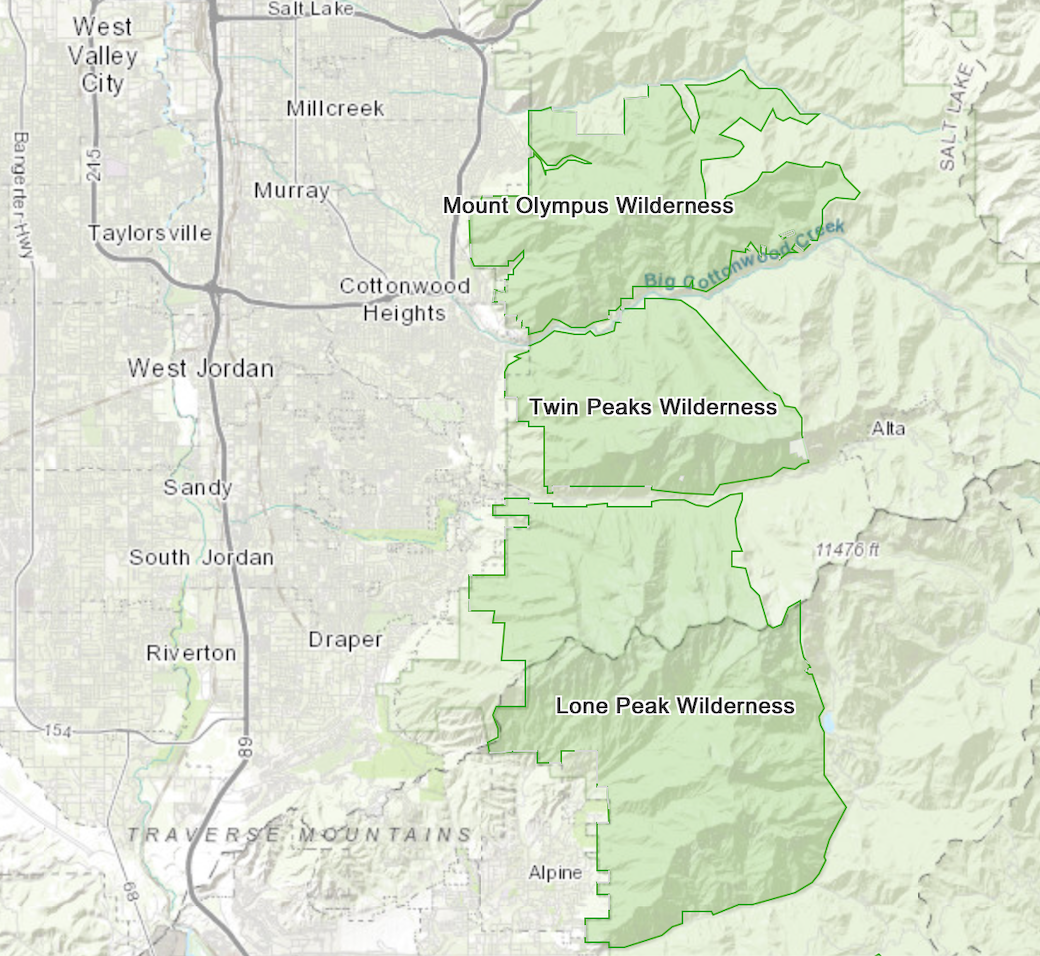Twin Peaks Wilderness
What is Wilderness?
Designated Wilderness Areas are lands that are part of the National Wilderness Preservation System, and are “an area where the earth and its community of life are untrammeled by man, where man himself is a visitor who does not remain” (Wilderness Act of 1964). Wilderness areas were first established in 1964 when the Wilderness Act was passed. The U.S. Forest Service, the National Park Service, the U.S. Fish and Wildlife Service and the Bureau of Land Management manage these areas. There are 765 federally designated wilderness areas that consist of 110,005,113 acres across 44 states in the United States. Wilderness Areas are described as places that exist in their natural state and where humans have little impact.
FOR MORE INFORMATION ABOUT WILDERNESS AREAS:
- https://www.wilderness.net
- https://www.nps.gov/subjects/wilderness/index.htm
- https://www.blm.gov/programs/national-conservation-lands/wilderness
- https://www.fs.fed.us/managing-land/wilderness
What and where is Twin Peaks Wilderness?

Twin Peaks Wilderness Area is located in the Central Wasatch Mountains, east of Salt Lake City. It is comprised of 11,796 acres that are located between Big and Little Cottonwood Canyons. It has a series of hiking trails, and encompasses several mountains including Twin Peaks, Superior Peak and Dromedary Peak. Elevations range between 5000 and 11,319 feet. This Wilderness Area was established in 1984 by Congress and is under the Utah Wilderness act of 1984. It offers beautiful views and great outdoor experiences, but in order to preserve the wilderness, certain practices must be observed.
Why Recreate in Twin Peaks?
Twin Peaks Wilderness is only minutes from Salt Lake City, but allows residents and tourists to escape the hustle and bustle of city life to find solitude, and to be absorbed into its beauty. These areas have a wide variety of unique plants and animals that cannot be found in the valley. Moose, deer, Dusty Grouse, American Three-toed Woodpecker, Hammond’s Flycatcher and many more can be found roaming this Wilderness Area. During the summer months Twin Peaks is filled with bright and colorful native wildflowers. Travelers will hike though groves of aspen, Gambel oaks, Douglas fir, Spruce subalpine fir, Lodgepole pine and beautiful meadows with dramatic rock features and towering mountain peaks on either side, as well as beautiful lakes and rivers that provide drinking water for the Salt Lake City valley. Twin Peaks Wilderness provides opportunities to explore an environment that has not been trampled by humans.
We Need These Areas
With Utah's population is growing every year and the Utah’s Long-Term Demographic and Economic Projection Summary expects the population to rise to 5 million by 2050. As solitude become harder to find, wilderness areas will continue to provide these treasures to the residents and adventurists who seek them. Everyone who uses wilderness areas must take a role in protecting and maintaining them so that they are preserved for all including future generations. Wilderness areas offer so much to the people who live in the Salt Lake City area, and it is up to all of us to give back by respecting and maintaining them.

